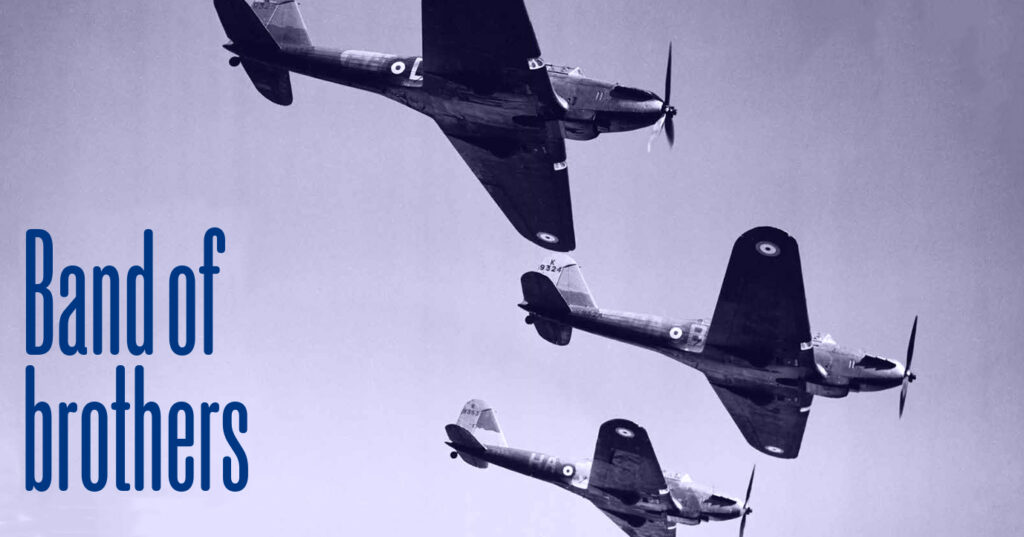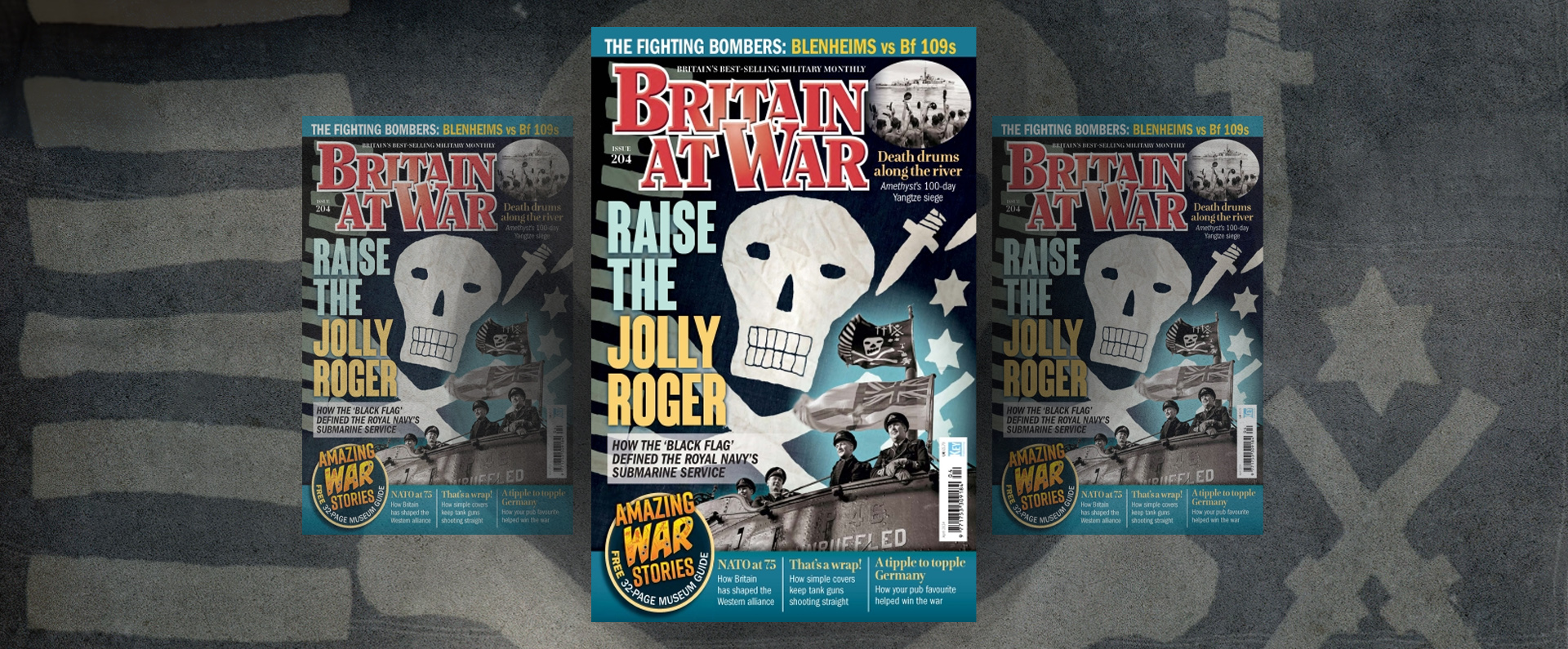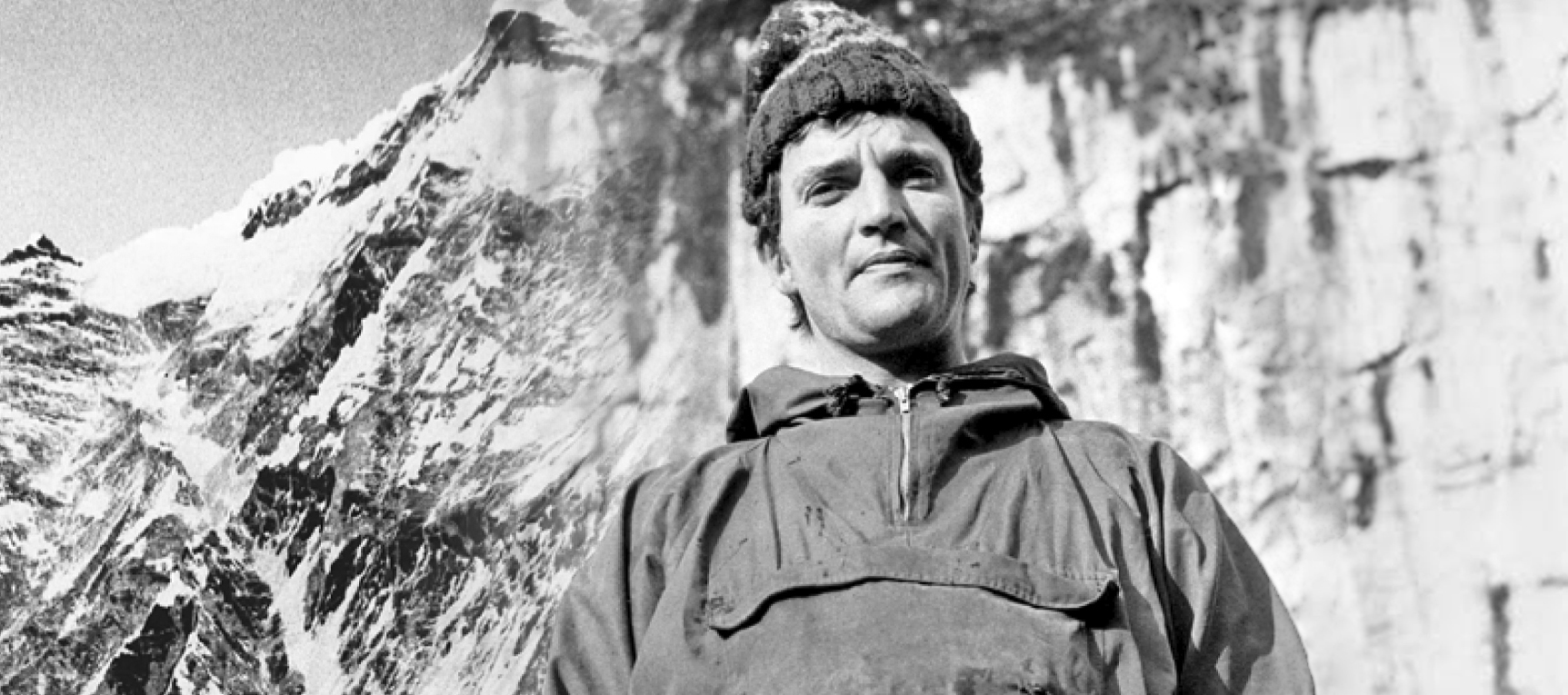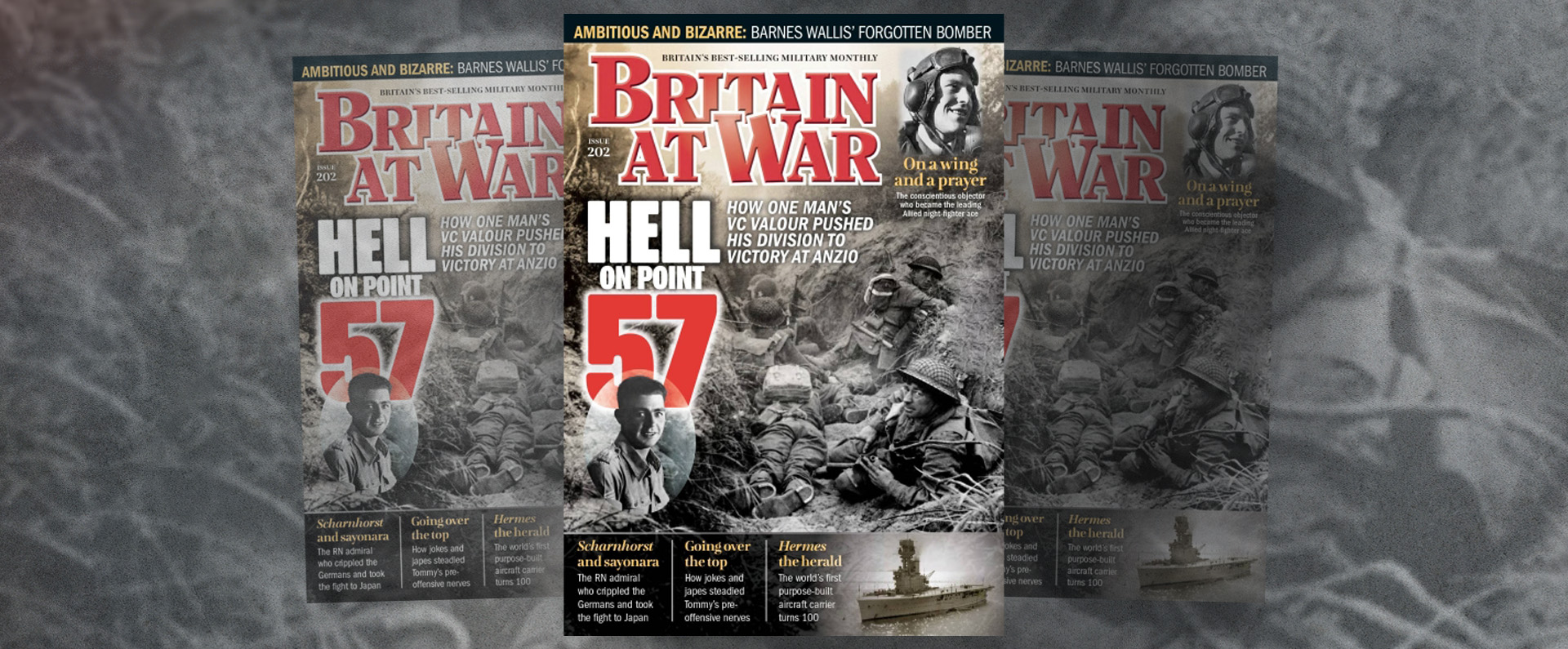
Published in The Sunday Times Magazine on 16 September 2018.
Pilot Officer Desmond William Garland
Flying Officer Donald Edward Garland
Flight Lieutenant Eric Francis Garland
Flight Lieutenant John Cuthbert Garland
As the Battle of Britain Thanksgiving Service at Westminster Abbey remembers the heroes of the skies today, Michael Ashcroft tells the story of a family who gave up four sons to the RAF war effort.
During their childhoods, they were typically adventurous and boisterous boys: they loved making model aircraft, sailing toy boats, hunting for crabs in rock pools and swimming off remote beaches.
The four Garland brothers also had a mischievous, even a wild, streak: on one occasion they greeted a new governess by stripping naked and running into the bushes as she walked up their drive. During another escapade, they gathered chemicals in a test-tube in order to make a home-made “bomb”, only for the device to explode leaving their faces blackened and their hair singed.
Despite age differences of up to 10 years between them, they were in every sense a “band of brothers” — inseparable, daring and fiercely loyal. They also shared a common passion: a love of aeroplanes.
In some ways, it came as no surprise to family and friends that during the Second World War the brothers became arguably the bravest family of RAF servicemen that has ever lived, sacrificing their lives, one by one, for king, country and wider freedoms.
Today, to mark this year’s centenary of the RAF and today’s Battle of Britain Thanksgiving Service at Westminster Abbey, I am able to tell the full story of the “glorious Garland brothers”, as they became known, for the first time.
The Garlands are believed to have been the only family that provided four sons (all of them officers) to serve in the RAF during the 1939-1945 global conflict and that saw none of them return. The brothers had Irish roots: they were all born in either Dublin, or Ballinacor, Co Wicklow, where they had a country home.
Their father was Dr Patrick Garland, a Roman Catholic GP who, as a young man, had travelled to west Africa’s Gold Coast and served as a medical officer in the Anglo-Ashanti wars of the late 19th/early 20th centuries. There he had gained respect for sucking a chest wound of a soldier who had been struck by a poisoned arrow at the siege of Coomassie. Much later, he was decorated with the Companion of the Order of St Michael and St George (CMG) for his tireless medical work.
The boys’ mother was Winifred Irene Garland (known as Irene), an elegant English girl who, at 19, had converted to Catholicism from her original Church of England faith in order to marry a wealthy and handsome Irishman, who was 14 years her senior, in April 1902.
Over the next 16 years, the couple had four sons: Patrick James, born in 1908; John Cuthbert (always known as “Jack”), born in 1910; Desmond William, born in 1915; and Donald Edward, born in 1918. They also had a daughter, Sheila Olivia, born in 1912.
Growing up in Ireland, the older boys attended several schools, including a Jesuit school in Dublin. But this was the time of escalating violence between Catholics and Protestants. Patrick and Irene Garland decided it would be safer to move the family to London, settling in Bayswater in around 1922. At one point, the two younger boys, Desmond and Donald, attended Cardinal Vaughan school for Catholics in west London, while Patrick worked in a motor business and John was a medical student.
Dr Patrick Garland, who had been plagued by ill health as a result of contracting malaria in west Africa, died in 1929, leaving his widow to bring up four boys and a girl on her own. Some time after his death, Irene moved from Bayswater to nearby East Finchley, north London.
Despite being the youngest brother, Donald was the first to join the RAF in 1937. Soon after the outbreak of war two years later, he was stationed with his unit — 12 Squadron — in northern France, piloting the Fairey Battle light bomber, a solid, reliable, but also slow and outdated aircraft. During this period, he was asked what he would do after the war: “I don’t expect to survive it,” he replied, “but if I do, I should like to become a doctor. It seems to me a better kind of life trying to cure people than kill them.”
In February 1940, Donald, who the previous September had taken part in the squadron’s very first operational sorties, was promoted to Flying Officer, at the tender age of just 21.
The “phoney war” ended with the German invasion of Holland, Belgium and Luxembourg in early May 1940. As the Allies were forced to retreat, German troops were soon streaming into the Low Countries and it was imperative to stem the flow by bombing the Veldwezelt and Vroenhoven bridges on the Albert canal, near Maastricht. Night-time raids on the bridges failed and the order went out to the RAF to destroy them at “all costs” with an audacious day-time raid.
Donald wrote to his mother: “Things are beginning to liven up … I want to thank you for all the loving care that you have always given me … Try not to worry. Take care of yourself. God bless you.” In another letter, dated May 10, 1940, two days before his final mission, he wrote: “Just a line to let you know I am quite well and happy.”
12 Squadron was chosen for the difficult role of targeting the two bridges — to some a suicide mission because they were so heavily defended. Indeed, the chances of anyone surviving were deemed so slim that, in a rare move, only volunteers were considered. Typical of their courage and devotion to duty, everyone in 12 Squadron volunteered and lots had to be drawn for the six crews needed for the mission.
On the morning of the attack, May 12 1940, one of the bombers was unfit for service and so just five three-men crews took part. Flying Officer Donald Garland, the mission commander, was the pilot of the lead aircraft and, in advance, had opted to go for a low-level approach to the Veldwezelt bridge — dropping as low as 50ft — rather than dive bombing from a greater height. As his aircraft approached the bridge, it was greeted with heavy machinegun and anti-aircraft fire, while enemy fighters, Messerschmitts, also took off to protect the bridge.
At least one bomb from Donald’s aircraft hit the bridge, but his bomber was struck by the awesome enemy fire. It careered out of control into the ground, exploding and killing all three crew. Garland had died a month short of his 22nd birthday, along with his navigator and rear gunner. Only one airman, the pilot of a severely damaged bomber, made it back. Of the 14 other men who had set off that morning, nine had been killed and five others had baled out of their stricken aircraft and taken as PoWs. The two bridges were badly damaged.
Donald Garland’s mother and his siblings were distraught upon hearing the tragic news. Yet, one by one, the remaining three brothers pledged their commitment to honouring their brother’s death by all serving in the RAF throughout the war — unless death came first.
The surviving brothers were soon all following in Donald’s footsteps, except Pat, who at 6ft 4in, was considered too tall to fly. He instead initially served in the Irish Guards, unaware that a chance to serve in the RAF would eventually present itself.
Eventually, both Pilot Officer Donald Garland and his observer, Sergeant Thomas “Dolly” Gray, 25, were awarded the RAF’s first two Victoria Crosses (VCs) of the war on June 11, 1940.
Their joint citations in The London Gazette ended: “Much of the success of this vital operation must be attributed to formation leader, Flying Officer Garland, and to the coolness and resource of Sergeant Gray, who navigated Flying Officer Garland’s aircraft under the most difficult conditions in such a manner that the whole formation was able to successfully attack the target in spite of subsequent heavy losses. Flying Officer Garland and Sergeant Gray unfortunately failed to return from the mission.”
Donald’s mother said in a modest tribute to her youngest son: “Everything Donald did was well done.” One year and a day after the formal announcement of the two VCs, Irene — now remarried and Irene Lane — accompanied by her son Pat, went to an investiture at Buckingham Palace on June 12, 1941. Shortly after, she wrote to King George VI asking him to approve her son Pat’s transfer from the Army to the RAF. Pat was duly transferred soon afterwards.
In the early summer of 1942, Pilot Officer Desmond Garland, of the Royal Air Force Volunteer Reserve (RAFVR), was serving with 50 Squadron, a Bomber Command unit. Desmond was piloting a Manchester aircraft that had taken off at 10.20pm on June 5, 1942, to bomb a German target. However, his aircraft was intercepted by enemy fighters and shot down an hour or so later off the coast of Brittany.
When his mother was told he was “missing in action”, she clung for days to the forlorn hope that her son had survived the crash before she and her children eventually accepted his fate: Desmond had become the second Garland brother to die in RAF service. It eventually emerged that Desmond and five of his crew had been killed when their Manchester crashed into the sea. A seventh crew member had survived and was taken as a PoW.
After the war had ended, Pilot Officer RJ Gill, the wireless operator air gunner who lived to tell the tale, stated: “The aircraft was shot down on 6th June and crashed into the sea off the French coast near Lorient. It hit the water and I remember nothing until I came to the surface and found blazing petrol on the water. No one else was to be seen. The Germans told me there was only one survivor.”
Desmond, likeable and easy going, was 27 when he was killed. Like Donald, he was single when he died. His commanding officer wrote to his mother: “Your son was the most gallant pilot and a man of character and charming personality, greatly respected by his brother officers and all who knew him.”
Flight Lieutenant John Garland, always known as Jack, also with the RAFVR, had spent a very different war to his three brothers. Prone to bouts of ill health, he had initially been rejected for service. However, he was later commissioned into the RAF as a medical officer. Like his father, he had been determined to pursue a career as a doctor. Jack was totally dedicated to his work, toiling around the clock to treat and support injured airmen at RAF Marham, Norfolk. He had also treated air-raid victims at Woolwich, southeast London.
His dedication eventually took a heavy toll. He was transferred to King Edward VII Hospital near Midhurst, Sussex, where he died from tuberculosis on February 28, 1943, aged 32. He, too, was single when he died.
On New Year’s Eve, 1944, Flight Lieutenant Pat Garland, the oldest son, was serving with 2 Squadron, a reconnaissance unit, in France. On New Year’s Day, 1945, Pat, a veteran of countless sorties, flew a Spitfire on reconnaissance duties over enemy lines. It initially seemed that he had returned safely but — due to apparent engine failure — his plane crash-landed as he returned to his base. His height may have contributed to his death, in that he received severe head injuries.
Pat, who had married just months earlier, left a widow, Mary, when he died aged 36. He was the fourth and final one of Irene’s sons to perish during the war.
It is impossible to imagine the trauma and suffering that Irene went through. However, typical of her generation, she put on a brave face, stating: “I can only feel that it is a glorious thing to have brought up and educated four sons who never gave me a moment’s trouble and who now, so willingly, have given their lives for their country.” She added: “The future seems frighteningly empty but I try not to think about it. If I gave way to my feelings I should be letting the boys down.”
Meanwhile, the brothers’ sister, Sheila, who by then was married to a distinguished Royal Navy officer, was unable to hide her grief. “My mother was utterly devastated when she heard the news of Pat’s death,” says her daughter, Caroline Crompton-Turner, now 79, who was just four when her mother’s fourth and final brother died. “I remember she just cried and cried.”
Today, the graves and memorials of the four brothers are situated in three countries in Western Europe, including three graveyards fully or partially cared for by the Commonwealth War Graves Commission. They are modest reminders of one family’s supreme sacrifice towards the British war effort.
Flying Officer Donald Garland, the VC recipient, is buried under the shade of a maple tree in the back row of Heverlee War Cemetery, just south of the Belgian town of Leuven. Appropriately enough, his observer Sergeant Thomas Gray, who was also awarded the VC, is buried next to him and there are nearly 1,000 other Allied war casualties buried in the same graveyard.
The body of Pilot Officer Desmond Garland, the second brother to die, was never recovered but his name is listed in panel 69 of the magnificent Runnymede Memorial near Egham, Surrey. Overlooking the River Thames on Cooper’s Hill, it commemorates more than 20,000 airmen and women who were lost in the Second World War and who have no known grave.
Flight Lieutenant John “Jack” Garland, the third brother to die, is buried towards the centre of Midhurst Cemetery, West Sussex. There are some 3,500 burials in the cemetery, mostly civilian but some military.
Flight Lieutenant Pat Garland, the last brother to die, is buried in the front row to the right of the Cross of Sacrifice at Bergenop- Zoom war cemetery in the southern Netherlands. The graveyard, set next to a wood, contains nearly 1,200 war graves.
The wider family of the four brothers — their nieces Caroline Crompton-Turner, 79, from Southport, Merseyside, and her sister Garland Beech, 72, from Carshalton Beeches, Surrey, remain hugely proud of their late uncles and are in early discussions to construct a memorial in their honour. The family has donated Donald’s VC to the RAF Museum at Hendon, northwest London.
Garland Beech was given the unusual Christian name by her mother, Sheila, who died in 1988 aged 75, in order to prolong the surname of her brothers. The sisters said that family and friends liked to refer to the four RAF men as “the glorious Garland brothers” after their deaths. As Mrs Crompton-Turner says, “their bravery was simply incredible”.
Download a PDF of the original Sunday Times Magazine article
For more information, visit:
LordAshcroftOnBravery.com


